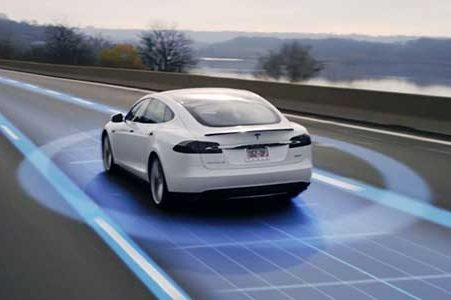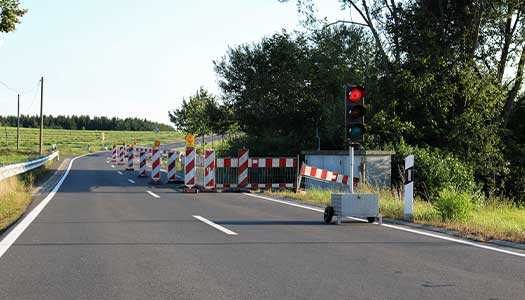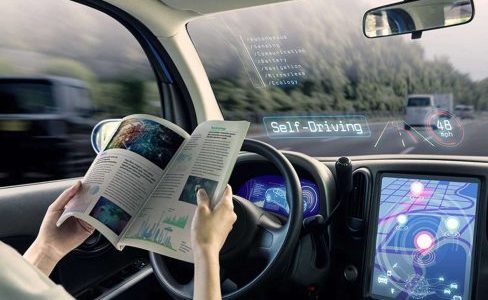smarter roads
Guarante the safety of new modes of mobility
In the world of tomorrow's mobility and to prepare future intelligent infrastructure technologies, our teams are inventing smart road markings.
We make "colors talk" to help autonomous technologies find their way and create dynamic intelligent road markings to improve traffic safety.
Supporting new modes of transport and preparing intelligent markings
In 5 to 10 years, transportation will look completely different. Clouds of smoke, fine particles, nitrogen oxides and other traffic pollutants, crowded subways, buses and cars running on diesel or gasoline are replaced by new mobility solutions that are increasingly autonomous, intelligent, environmentally friendly and interconnected. Some will drive themselves, without human intervention, such as automated guided vehicles, or AGV.
As a leader in smart materials, we are working alongside many industrial players to develop smart markings to enhance the safety and guidance of these autonomous traffic systems.
Do you have a project, an idea to develop smarter markings? Our experts are at your disposal.
Towards a more intelligent infrastructure and transportation
Develop smarter markings to support autonomous vehicle orientation
A self-driving vehicle, also known as an autonomous car, driver-less car or robotic traffic solution, is a transportation system that is capable of traveling without human input.
Self-driving vehicles use sensors to perceive their surroundings (road markings), such as optical and thermographic cameras, radar solution, lidar technology, ultrasound/sonar, GPS and inertial measurement units. Control systems interpret sensory information to create a three-dimensional model of the surroundings. Based on such solutions, cars identify appropriate navigation paths, and strategies for managing traffic controls (stop signs, etc.) and obstacles.
Nothing is yet set in stone in the field of transport automation: a fully autonomous technology (level 5) or a "semi-autonomous" transport with various driver-supervised driving assistance systems (level 2+), or a vehicule with delegated driving (level 3). Autonomy in car is often divided into six levels, according to a transportation system developed by SAE International. The SAE levels can be roughly understood as Level 0 – no automation; Level 1 – hands on/shared control; Level 2 – hands off; Level 3 – eyes off; Level 4 – mind off, and Level 5 – steering wheel optional.

The orientation of these autonomous cars is a key issue. Ground roads markings are an essential tool for autonomous transport guidance and collision avoidance : they are the rails of the road and, in the case of trains, real "intelligent virtual rails" as demonstrated by the first ART (Autonomous Rail Rapid Transit) experiment conducted in China in 2017.
To develop these new smarter roads markings, our teams use molecular engineering to modulate the optical properties of the material to promote detection in the ultra-violet, visible and infra-red (for example 905 nm).
This type of detection enables dialogue with image sensors (cameras, radars, lidars) whose data is processed for pattern recognition (tracks, obstacles, signs, roadway boundaries) and orientation of autonomous vehicles or trains.
Create modular signage technologies to prepare for future infrastructure

Until now, roads markings have been passive tools to guide transport. With the sensitivity of smart materials, the color of a road marking can become modular, configurable and interactive to communicate, to improve the guidance transportation.
At OliKrom, we specialize in these smart materials. One of the challenges for our teams is to master this color intelligence to provide information to drivers, to create smart sensors.
For example, temperature, light or humidity can be used to indicate to the drivers the risk of icy roads, overheated tires, the opening or closing of a section of traffic lines, etc.
For the engineers and doctors of our research and development center, this means integrating the notions of event duration (control time scale, number of ON/OFF cycles), choice of colors, technology implementation, etc.
Secure the use of GPS tools on infrastructure to improve the guidance transportation

Despite the deployment of GPS tools for transportation, vertical and horizontal road signs remain essential for drivers to ensure safe driving with safe directions.
- Smart road signage provides redundancy to secure the GPS orientation present in many cars or smartphones solutions but whose update is not always reliable.
- A road sign capable of changing color without any connection, without any electricity supply is a secure alternative to GPS systems vulnerable to remote hacking of transportation. The change of color in smart materials occurs only when the threshold is crossed. It is a thermodynamic process that acts as a passive solution. It's all in the initial programming of the smart material to present the right triggering threshold.
![]()
CONTACT US
We will get back to you as soon as possible..
"*" indicates required fields

